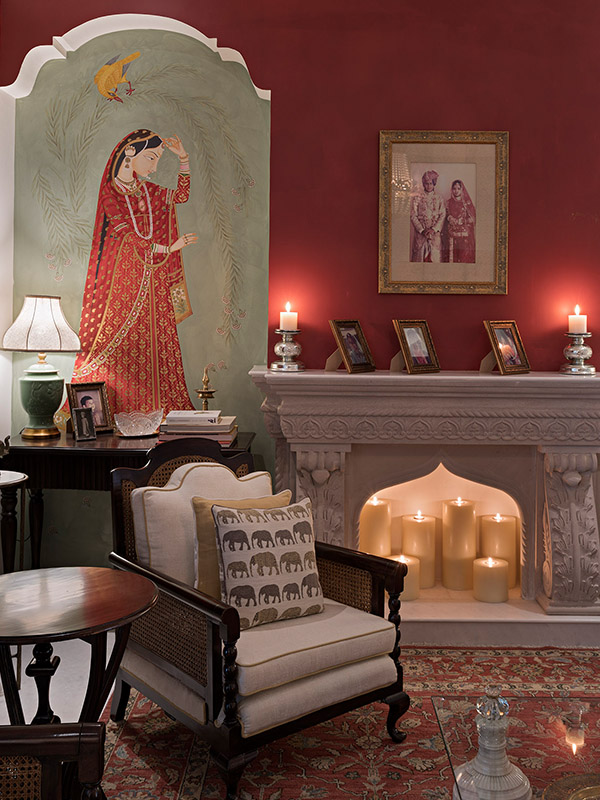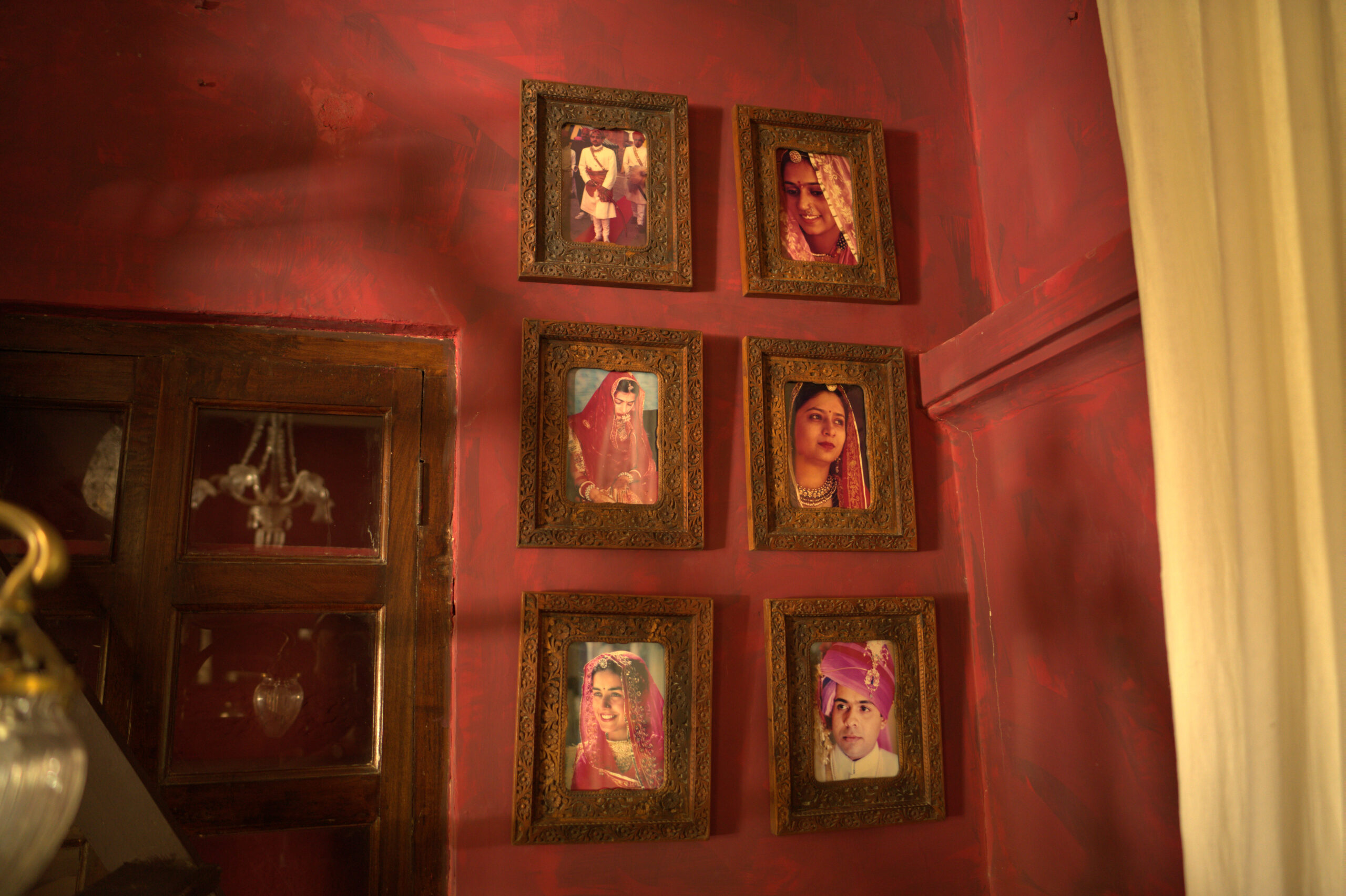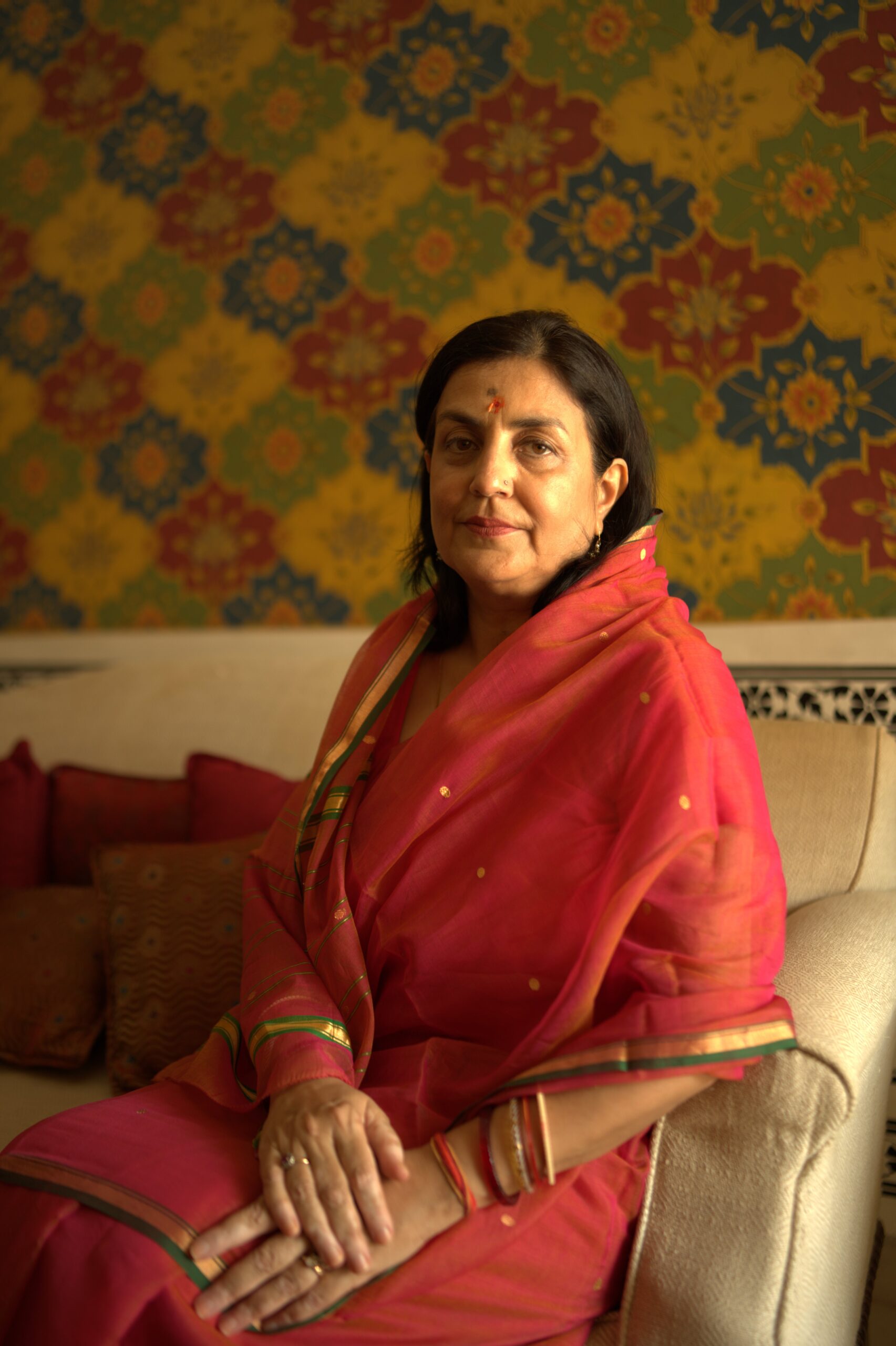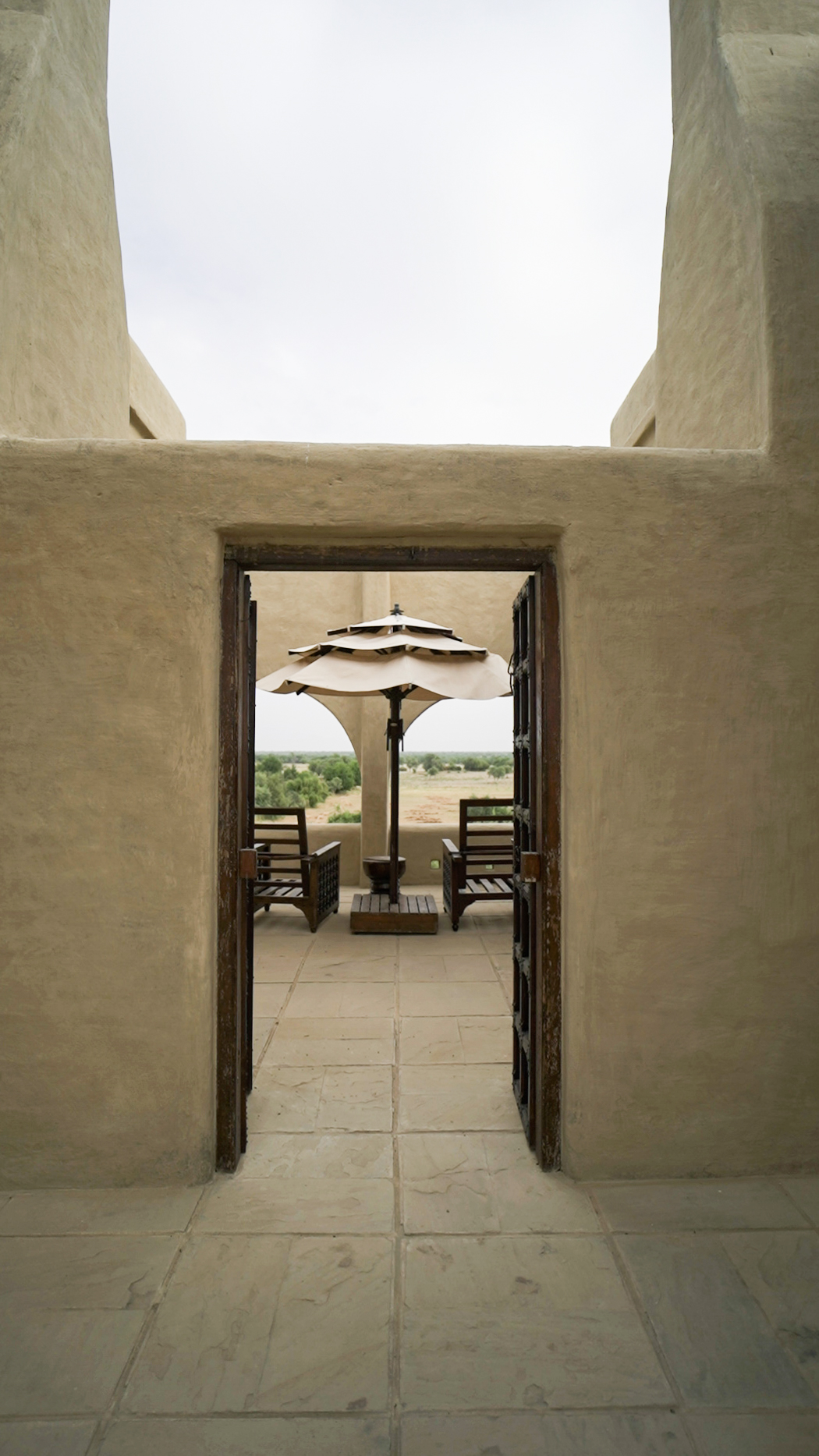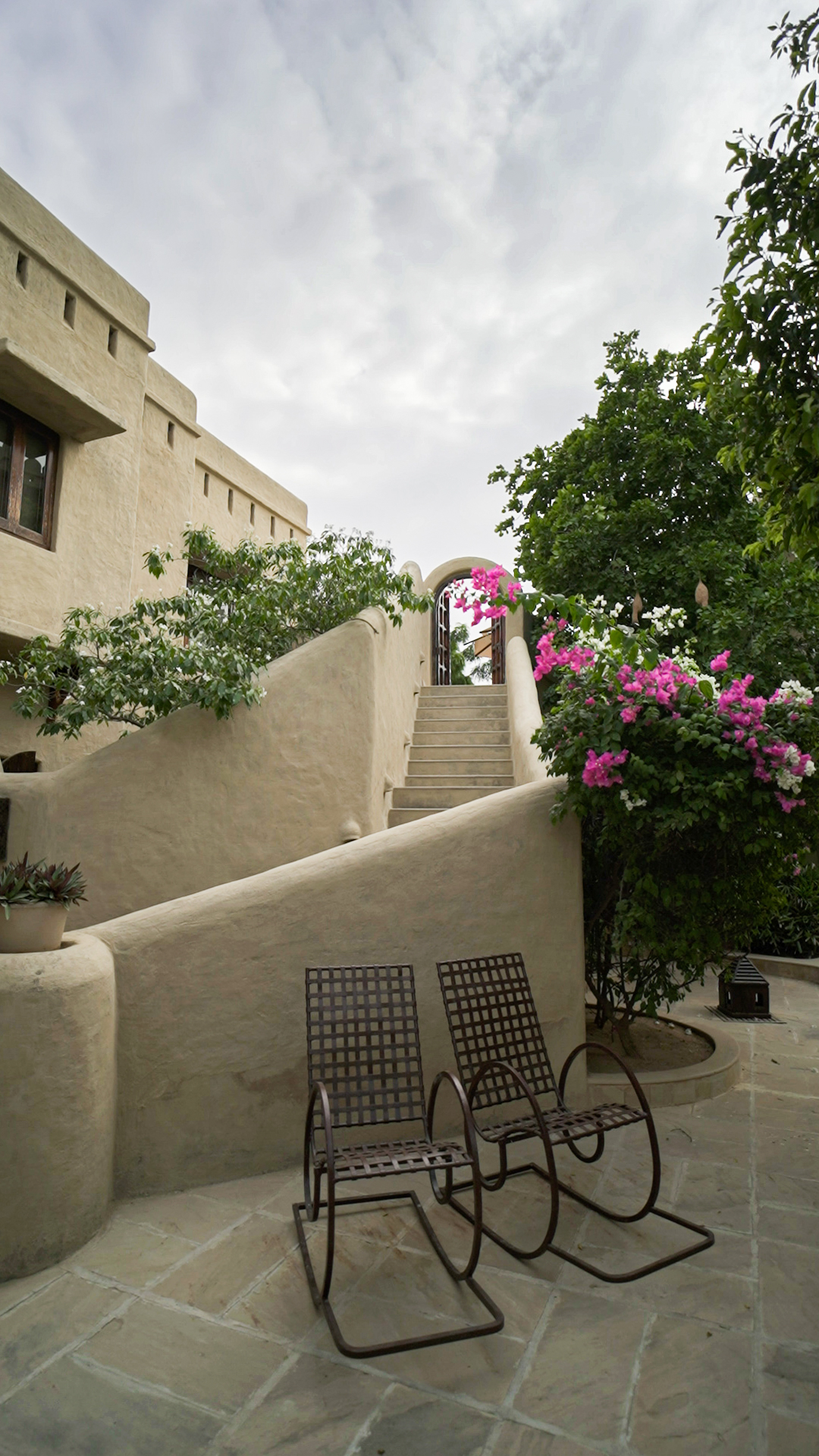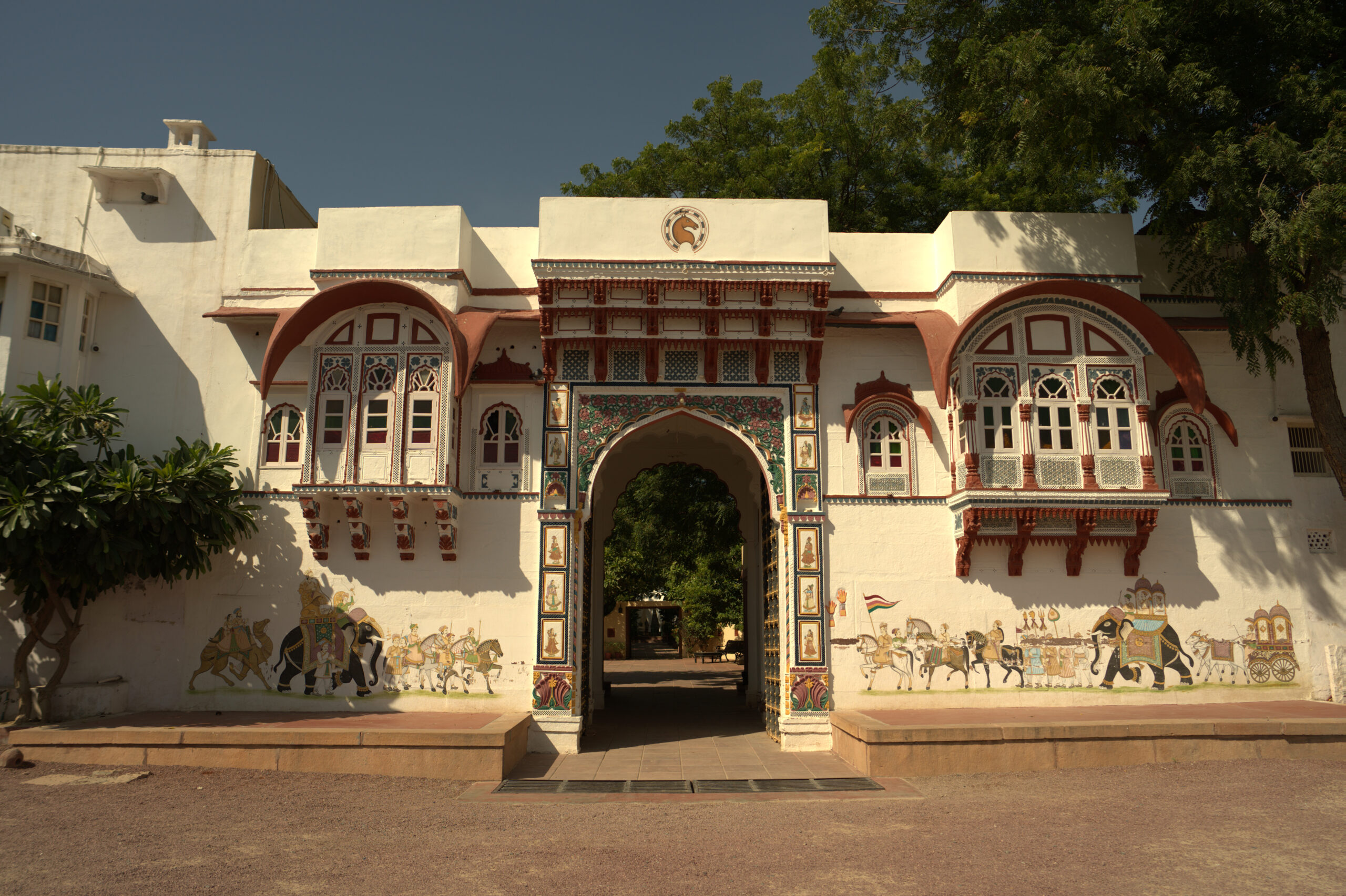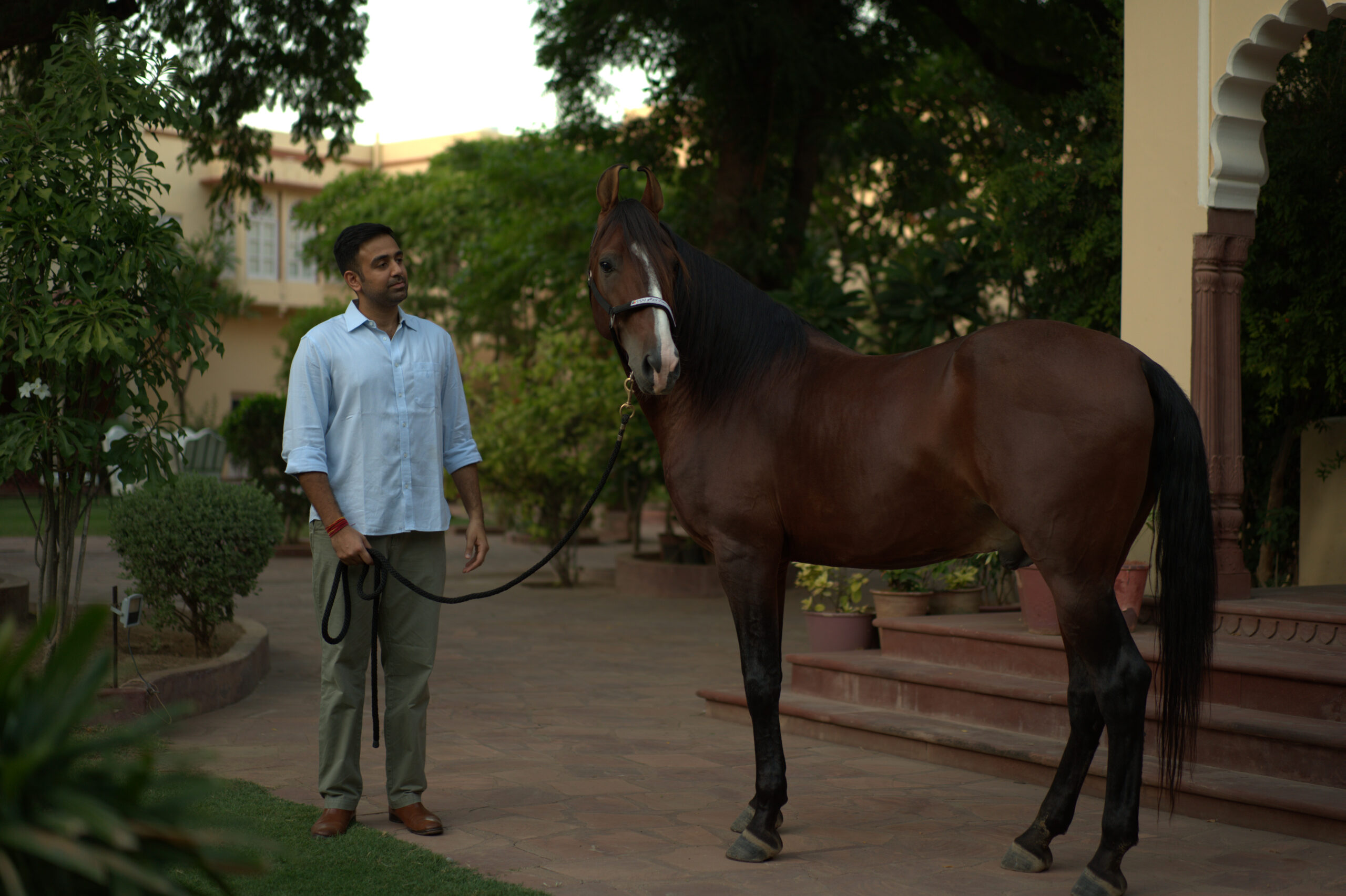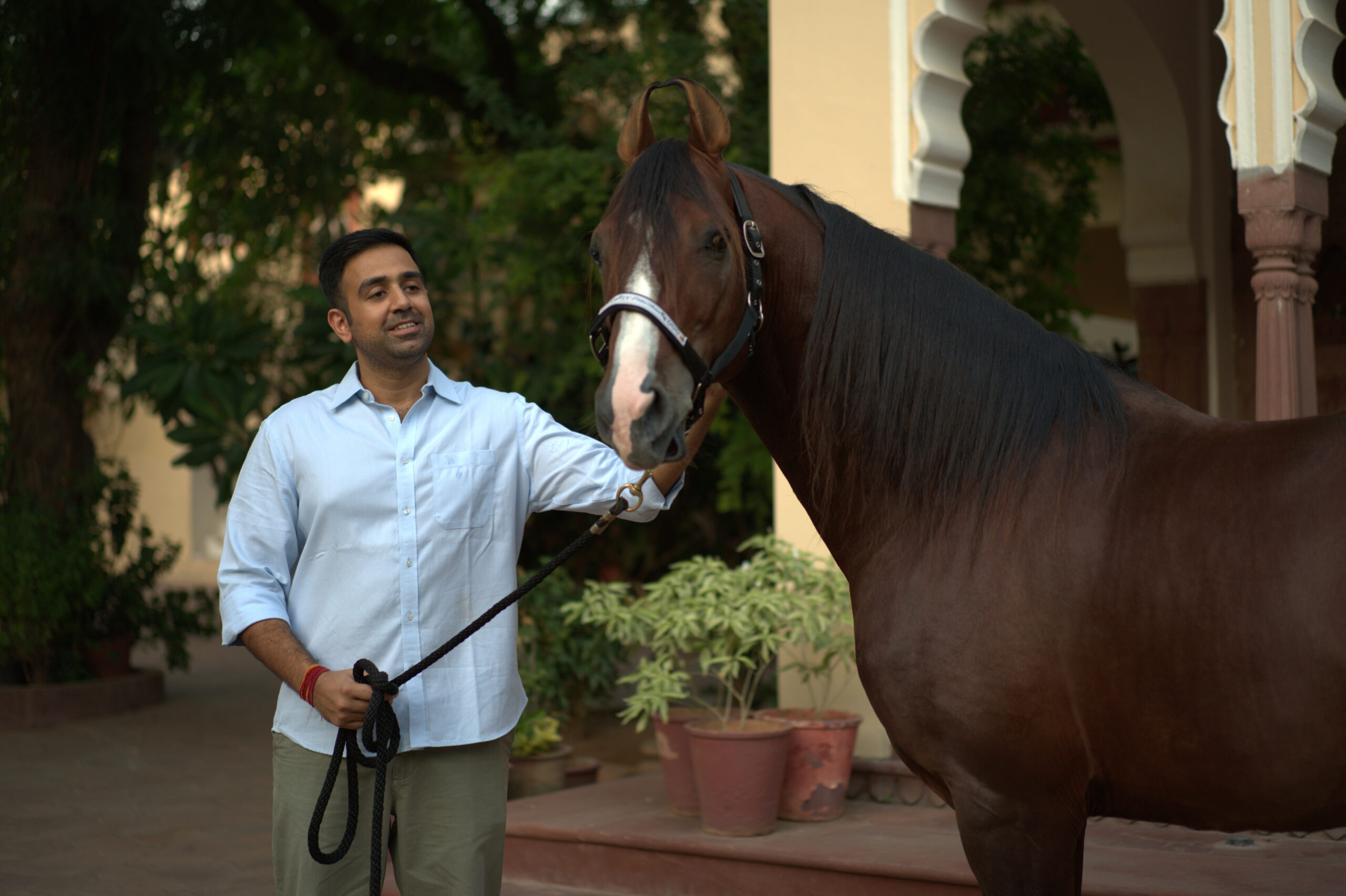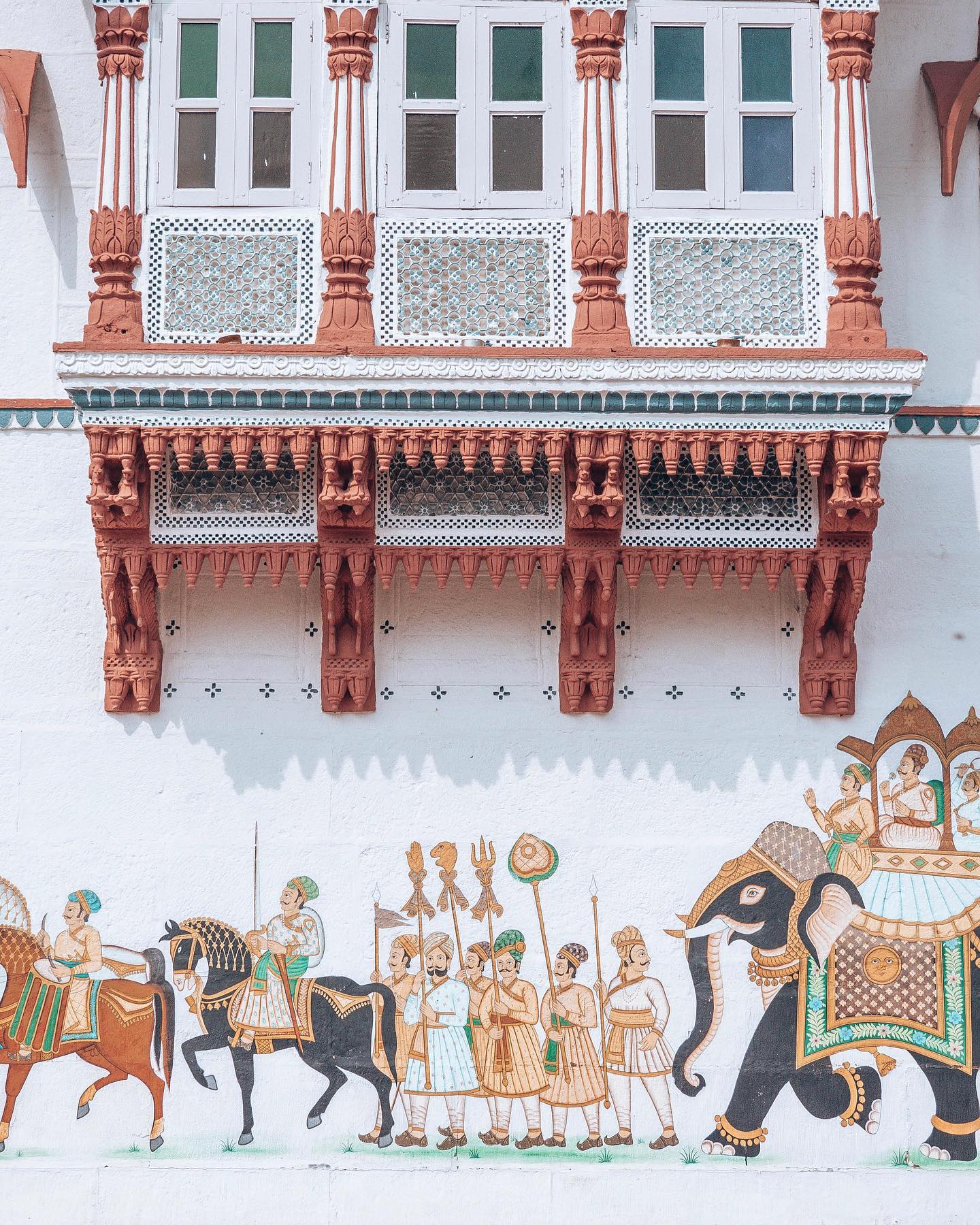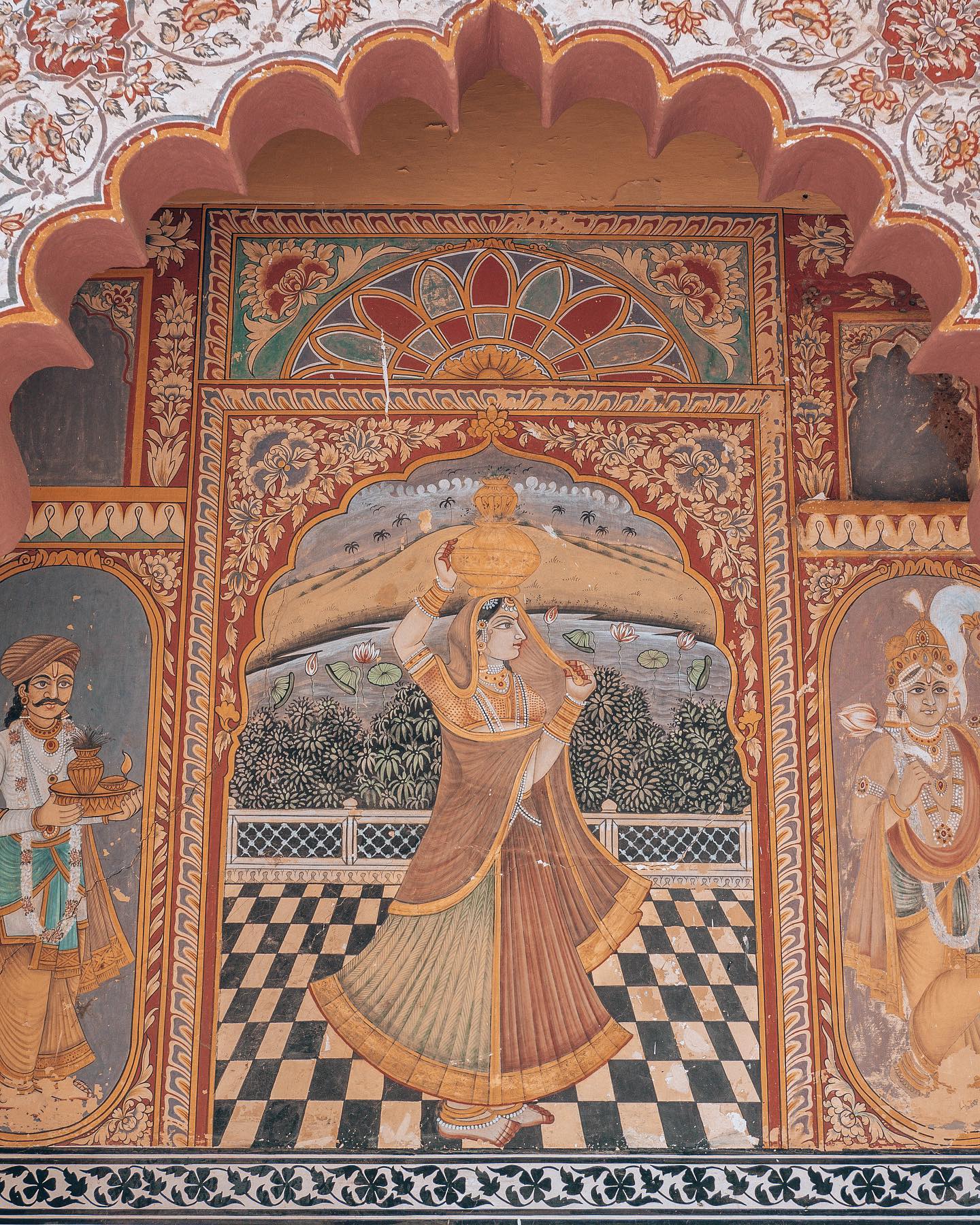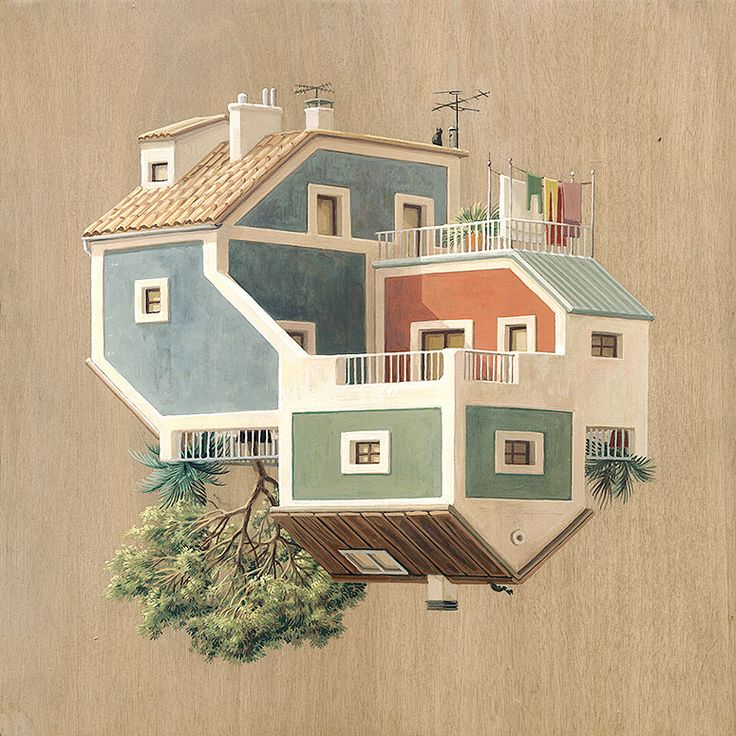The 1990s was considered the golden era of the Indian travel period. It was the time when international travellers eyed this ‘exotic’ land with a cultural lens, and the upward trajectory of travellers who visited India to seek its mysterious culture complemented this phenomenon. However, not many travellers dared to travel too far away from the Golden Triangle (Agra, Delhi and Jaipur) – it was the still the conventional perception of India read about in history books that seemed to capture their attention.
Fast forwarding to October 2022. I find myself in the midst of India’s royal state under the scorching sun in the torrid land of Rajasthan, seeking out a story that’s worth its salt. Travelling around 40km from the city of Jodhpur, I observe sign boards pointing me to “Rohet”, a quaint little town in Western Rajasthan.
Within no time, I walk into the erstwhile aristocratic haveli of the Singhs of Rohet, which has now been converted into the internationally acclaimed hotel – RohetGarh.
And within the course of the next few days, I find myself lost in the tales of Rohet’s antiquity, its present stature and its prospects of the future. Behind the eponymous “House of Rohet” brand are members of the Singh family – the master craftsmen who managed to transform Rohet into a destination of its own. Rashmi Singh with her fervour for interior design, Siddharth Singh with his intuitive business mindset and a passion for the rare breed of Marwari horses, and Avijit Singh – a dynamic businessman who blends modernity with tradition, together have meticulously carved the House of Rohet.
And this is their story.
There is an unbreakable thread that connects our past to the future. It is one that is tied in seamlessly with the present – the contemporary time – which has the potential to either let these tales be lost in oblivion, or the intangible power to preserve our lineage.
The Singhs of Rohet were unknowingly awarded a responsibility to carry forward their legacy; one that dates back to 1622 A.D.
His predecessor – Thakur Dalpath Singh II – was awarded the jagir of Rohet, a town in Western Rajasthan, by the then Maharaja of Jodhpur. It was his bravery in conquest that led the Singh family to become the first family of Rohet and the surrounding villages. Today, over a cup of coffee in the evening in Rohet Garh, Avijit reminisces about his ancestors. He takes me back to the inception of the House of Rohet – a family-owned hospitality business that endeavours to empower rural Rajasthan.
Having won many accolades, House of Rohet owns and operates four hotels under its belt – Rohet Garh, Mihir Garh (a member of the prestigious French hospitality group Relais & Châteaux), the Rohet House and the Rohet Wilderness Camp.
I discover that his education in one of Switzerland’s prestigious hospitality schools can be attributed to shaping Avijit’s personality as an internationally acclaimed hotelier and businessman.
Yet, the crimson-hued ornamental tilak on his forehead spoke of another tale, indirectly hinting at how important customs are to the Singh family and him.
Even before Avijit was born, his parents – Siddharth and Rashmi Singh braved a business decision back in 1990. They experimented with the idea of opening up their home to guests. While the elders in the family weren’t too thrilled about having guests walking around their family courtyards, the Singh’s intuition said otherwise. They were on to something bigger.
What started off as an “alternative” and “substitute” to Jodhpur became an independent destination of its own, with Rohet and its raw rurality at its forefront. The family created experiences for guests to come and interact with the locals of the nearby villages, where they could immerse themselves in local culture through an unadulterated lens.
Walking around the hotel, I am told about the origins of each part of the estate. From grand kitchens to dining spaces, former living spaces to courtyards, the spaces of Rohet Garh date back to a time of aristocracy. Avijit mentions how the family was very careful not to add in new structures, in order to keep the heritage of their home alive through centuries. “The entire property has been renovated and the hotel has been encompassed into the original structure. It was a far greater challenge than creating something new. But we felt that preserving the old structure was of utmost importance,” he says.
“Preserving history and heritage is a great responsibility. And that isn’t only restricted to bricks and mortar. It is really the soul and ethos of the place that has to be preserved. Because buildings eventually fade away. I’ll give you the example of the Ship of Theseus; when does it stop being the Ship of Theseus? It doesn’t,” he smiles.
(The Ship of Theseus is a thought experiment about whether an object that has had all of its original components replaced remains the same object.)
Avijit adds, “Likewise buildings keep changing overtime, what is concrete keeps changing, but the soul of the place needs to be preserved. It is important to us that since this is our home we continue to keep it that way.”
Another way in which the family has retained the soul of the haveli is with art that’s deeply embedded in the architecture. From the traditional paintings on the walls, the mirror work at various spaces, intricate embroidery in upholsteries to the vibrant hues on the walls, each detail has been created by local artisans. The interior design of the space has been helmed by Rashmi Singh, Avijit’s mother. She and her husband, Siddharth Singh, talk to me about their next passion project – Mihir Garh – which quite literally rose from the ashes.
Raised from the ground from nothing, the spectacle of Mihir Garh is built in Khandi village further away from Rohet. This was truly the family’s vision come to life, which they believed in and erected against all odds. An all-suite boutique hotel with just nine suites, Mihir Garh has managed to carve a niche in the world of international hospitality. This is credited by its accolades which includes a three-time title of the Best Boutique Hotel in the World by World Luxury Hotel Awards.
The family has drawn inspiration from all aspects of their lives for the fortress of Mihir Garh. Their centuries-old heritage in western Rajasthan established the foundation of the fort, which unassumingly depicts stories of the family and their passions. The golden hues of this Garh speak of their antiquated connection to nobility, whilst the raw finish of its walls ties back to how the family has stayed grounded to Rajasthan, staying true to their roots. The hand-painted walls and in-lay mirror work of the interiors embodies their passion to ensure the local artisans of the state get their true credit; while the details all around Mihir Garh are embellished by silhouettes of horses – an association that goes back decades.
Upon entering the fortress, large stables and grounds where magnificent horses running wild can be seen – depicting a moving picture from folklore. Rather minimally, elemental expressions of horses can be found across the suite’s details. Whether it’s paintings on the walls, the tapestries or the umbrella stands – if you look long enough, you can most certainly find details evoking the Marwari horse in each aspect of Mihir Garh. In fact, the hotel’s suites are named after Alishan – which was one of the premier and most loved Marwari equines within the family stables – along with his son Shandaar.
The family’s connection to horses can be credited for the above integration. In particular, it’s Siddharth’s love for a particular breed of horses – the Marwari – that he enlightens me about.
The Marwari is a rare breed of warhorses that dates back to the 13th century. Known for its signature features of curved ears, solid structures and erstwhile bravery in battle, Marwari horses look almost mythical in person. Although there is an uncanny similarity between the Arabic and the Marwari horse, there is no commonality in their lineage. The steed went through a downfall with the arrival of the British back in the early 1900s, who pushed it to the recesses of Indian army lodges, letting the Australian Whaler take forefront in battle. The royals of Rajasthan recognised the beauty behind the stallion and began to breed them as show horses. However, this was short-lived as the families no longer had the monetary bandwidth to manage this extraordinary genus, leading to the subsequent reduction in the numbers of these beautiful animals. The breed which was on its way to extinction, has been brought back to its former glory today. Working painstakingly is the All India Marwari Horse Society founded by His Highness Maharaja Gajsingh II Jodhpur that endeavours to bring back the Marwari to its past prestige. It does so by maintaining ideal breeding standards and raising awareness about the species. Siddharth Singh, a key member of the society, has contributed extensively to the return of the curly-eared steed. He runs one of the finest stables in the country where the Marwari horses have been bred quite purely. Since years, the Marwari horse has been the pride of the Singh stable in Rohet – and each stallion is treated like a member of the family – ceremoniously and emotionally.
The hotel also runs its own equestrian program, where the guests can choose to ride these beautiful creatures. Noteworthy names like Madonna and members of the British Olympic team have partaken in these programs over the years.
Interacting with the members of the family got me to the conclusion of how their lives have been a seamless blend between skill, art and a fervour for business.
From hospitality, architecture, design and note-worthy equestrian success, the Singh family has managed to extract the best of their passions and convert it into a solid business.
A version of the Ship of Theseus; Rohet itself is that vessel that has undergone a massive transformation owing to the skill and mastery of the Singhs – but still remains to hold strongly its original soul that makes it the home of the family.
Words by Akanksha Maker
Photographs by Zulkarnain Dev and Ruman Hamdani

